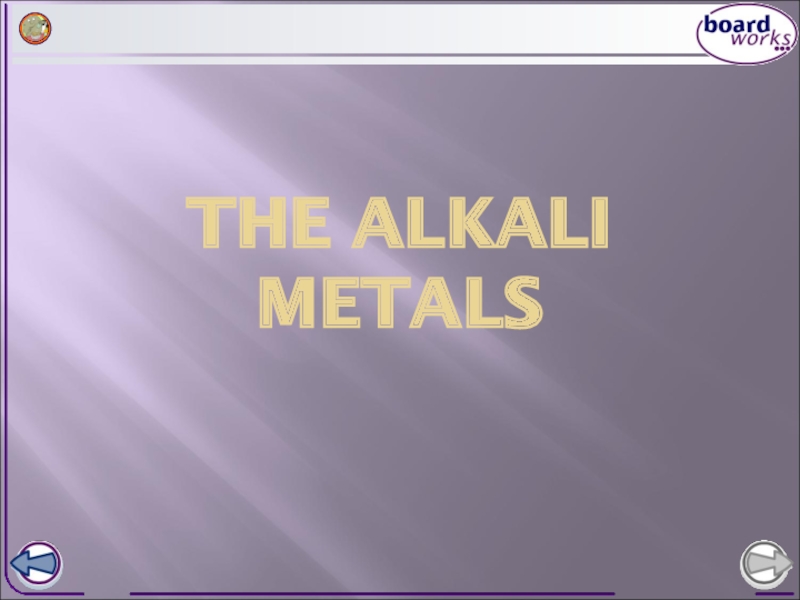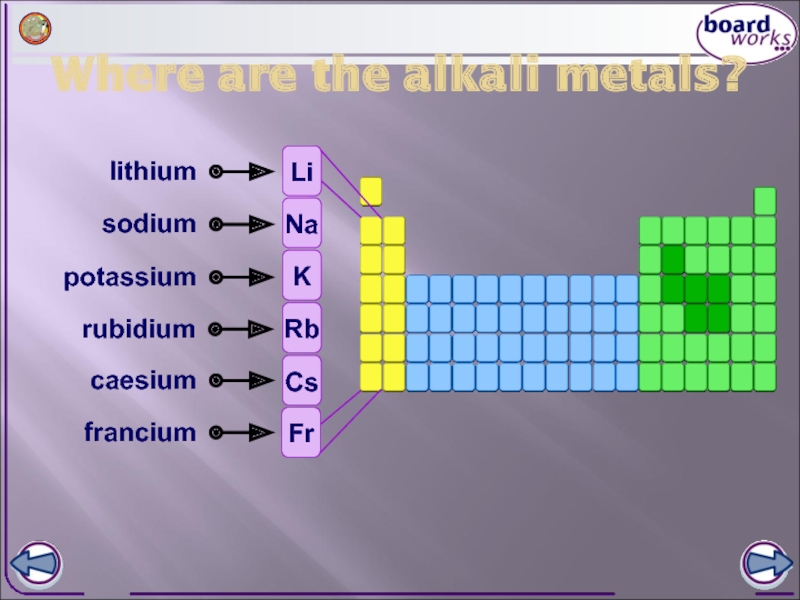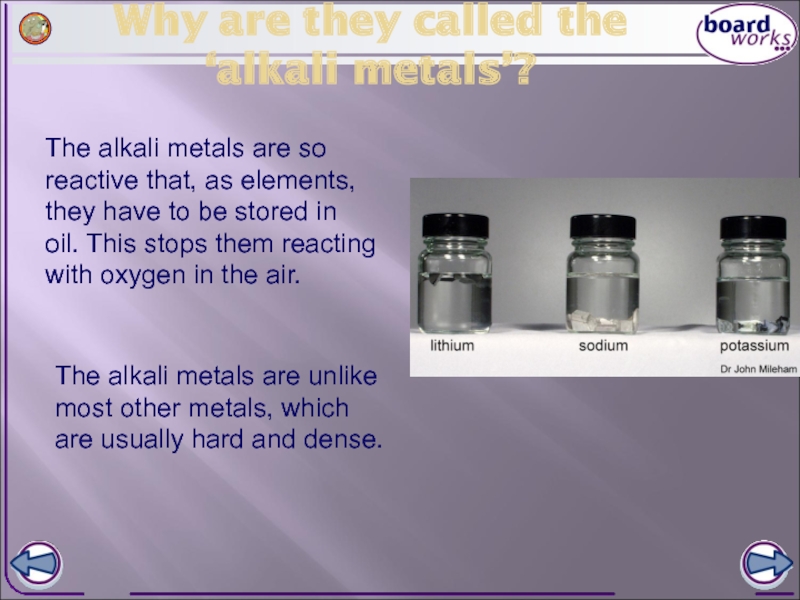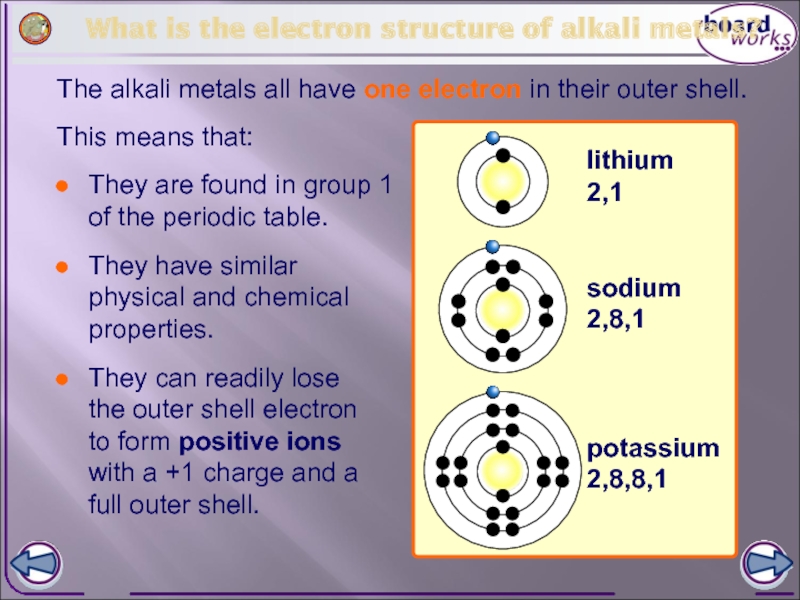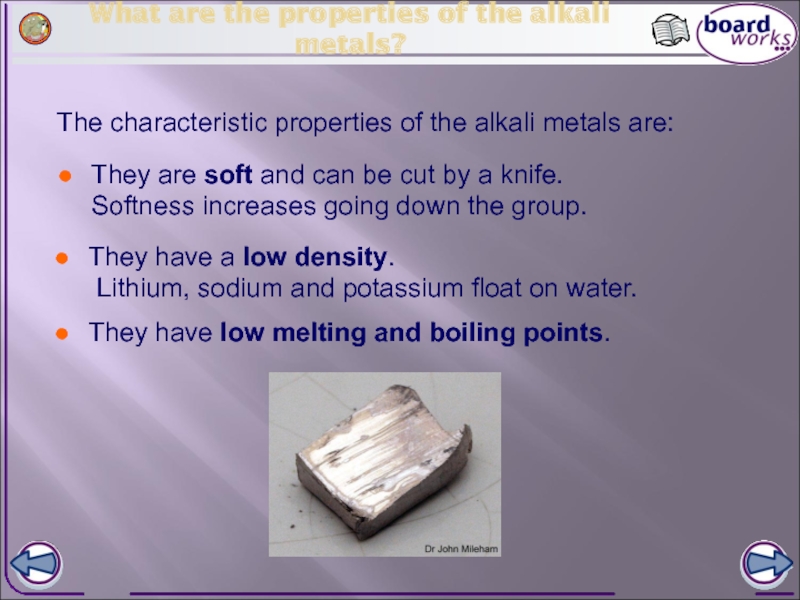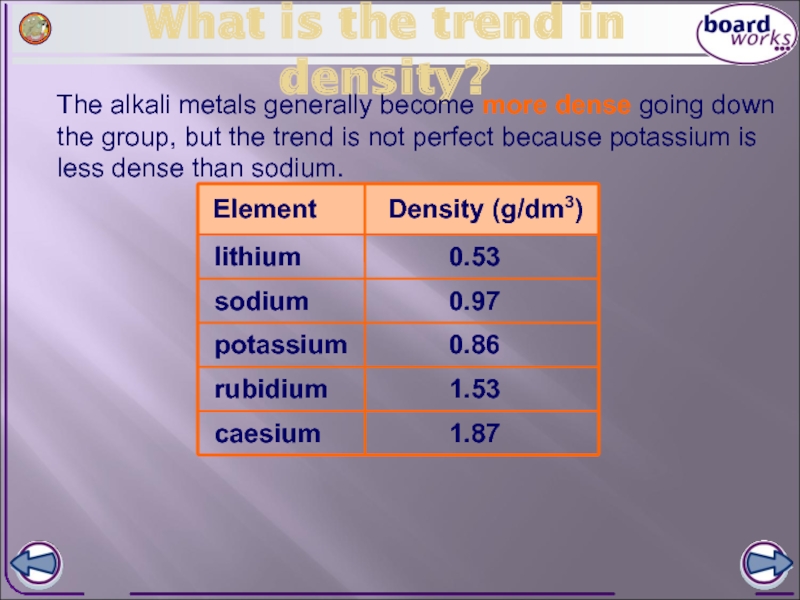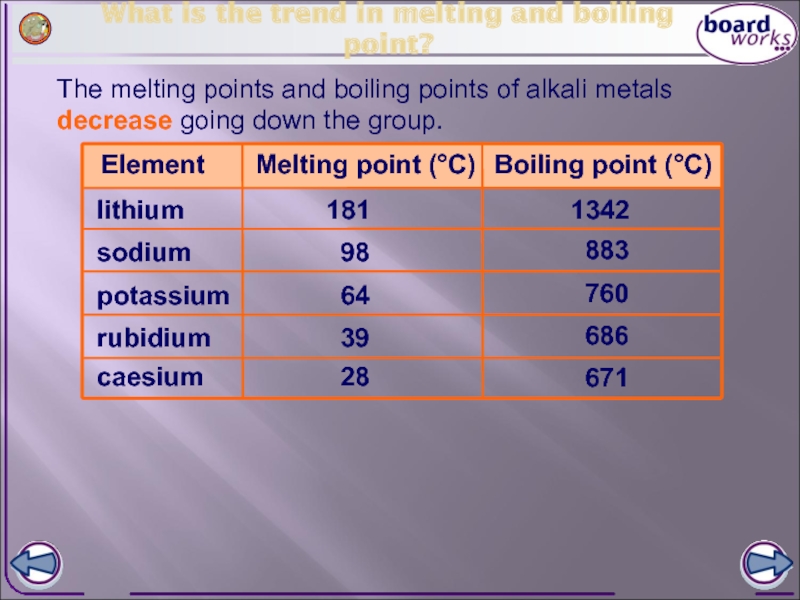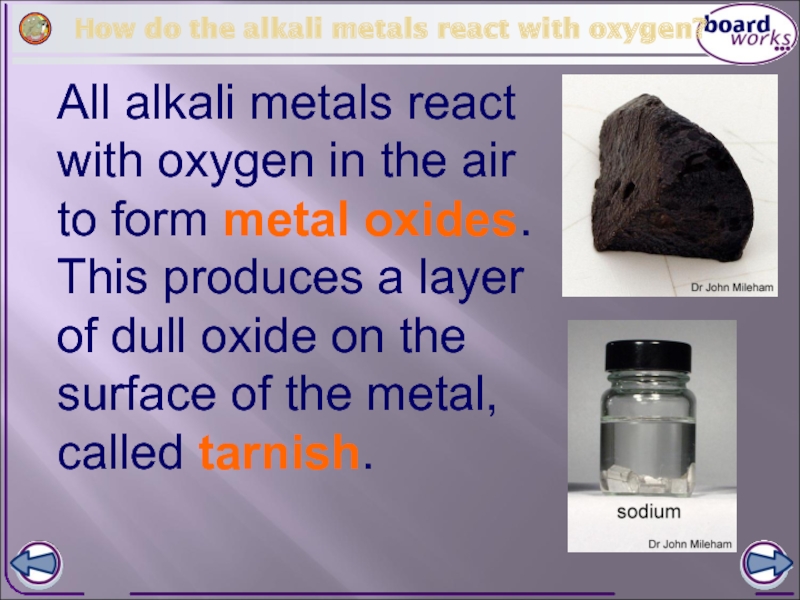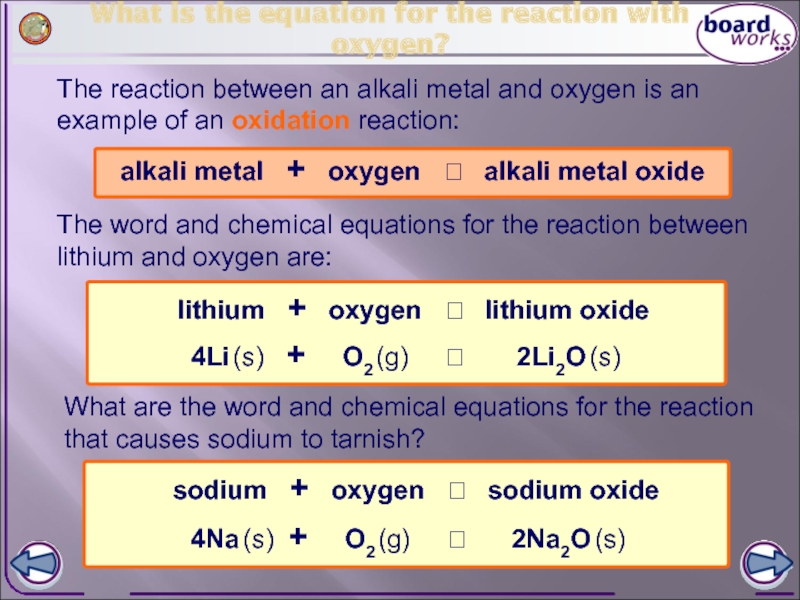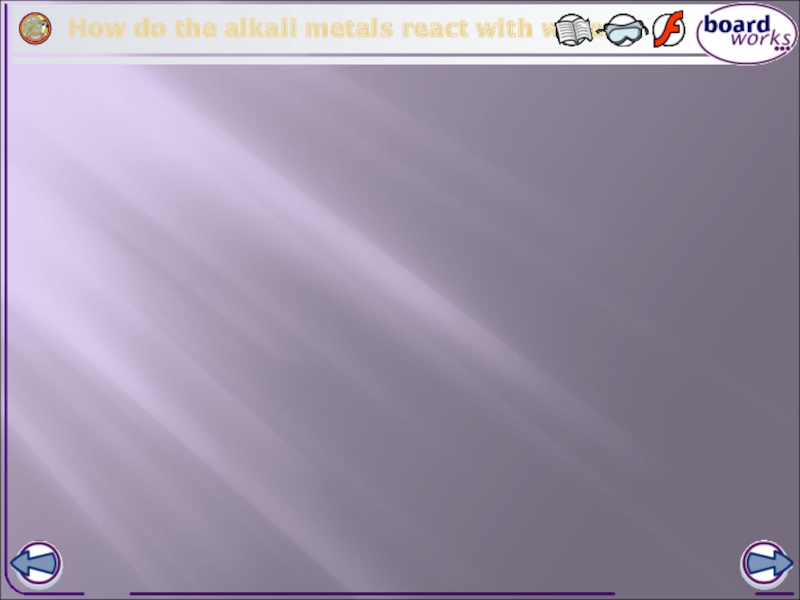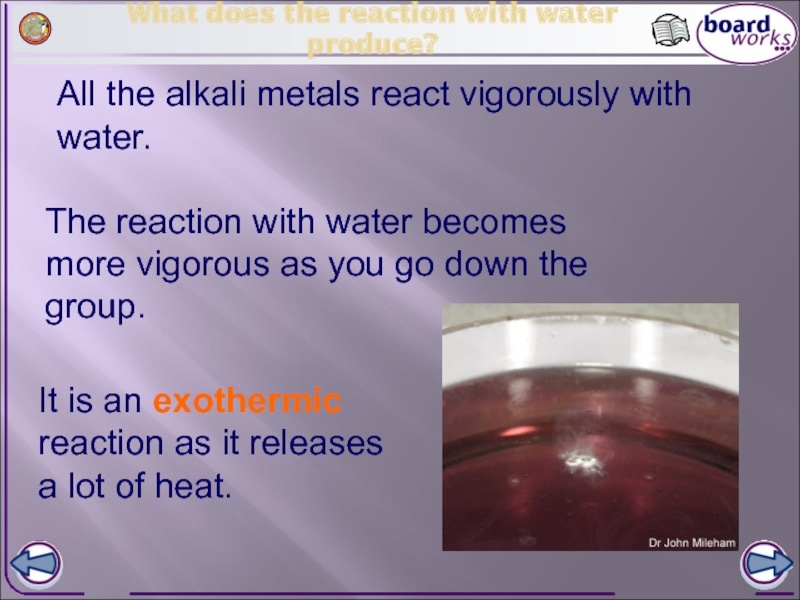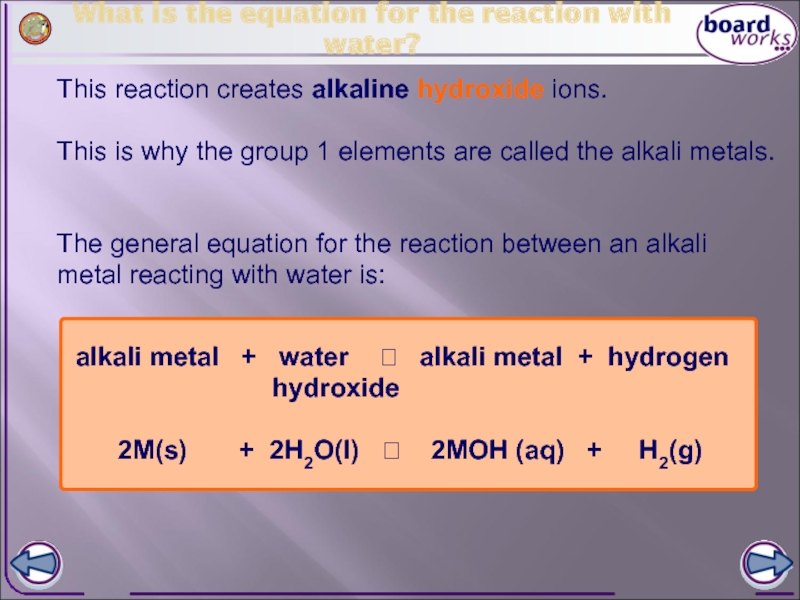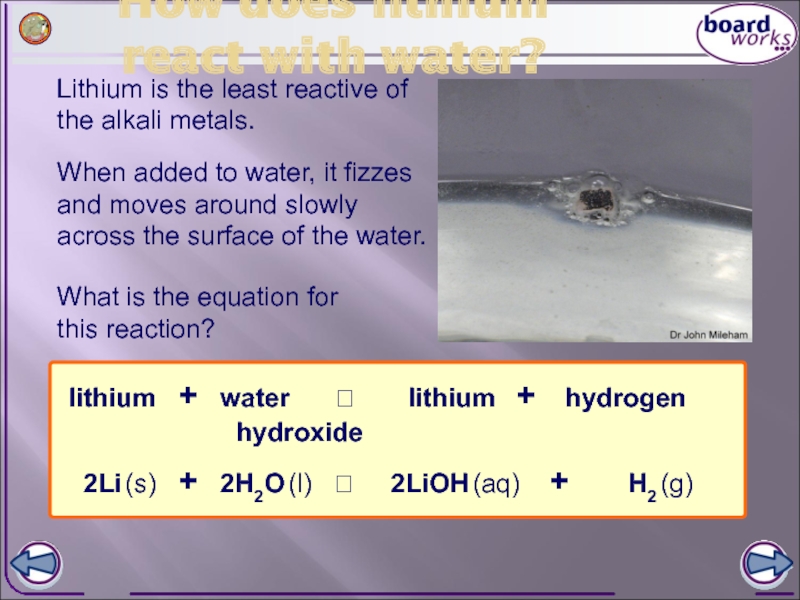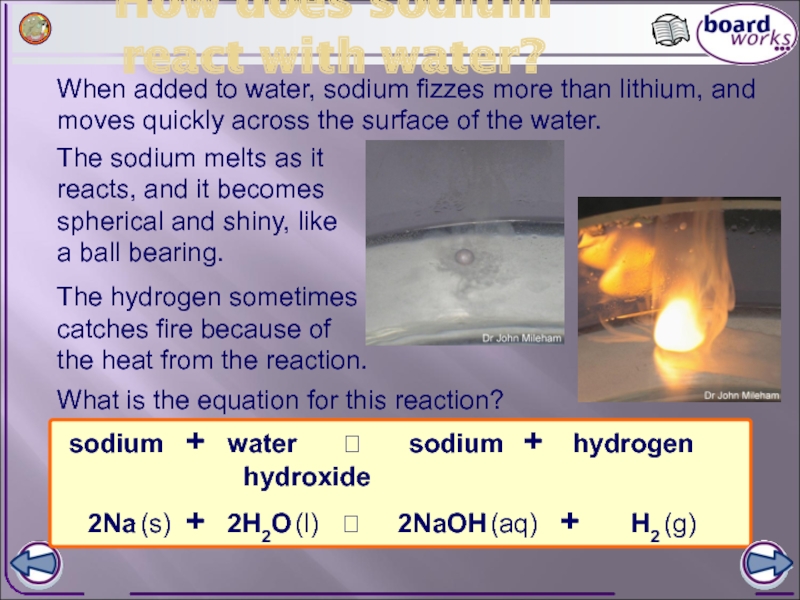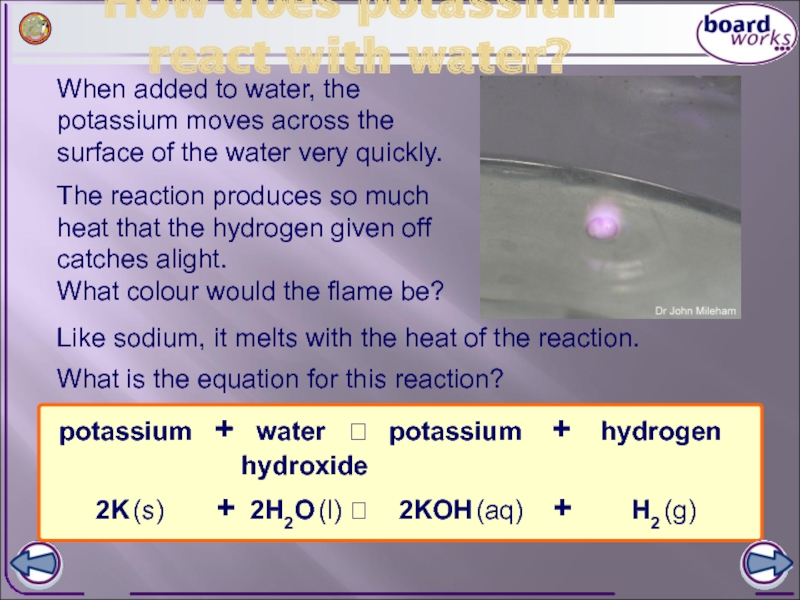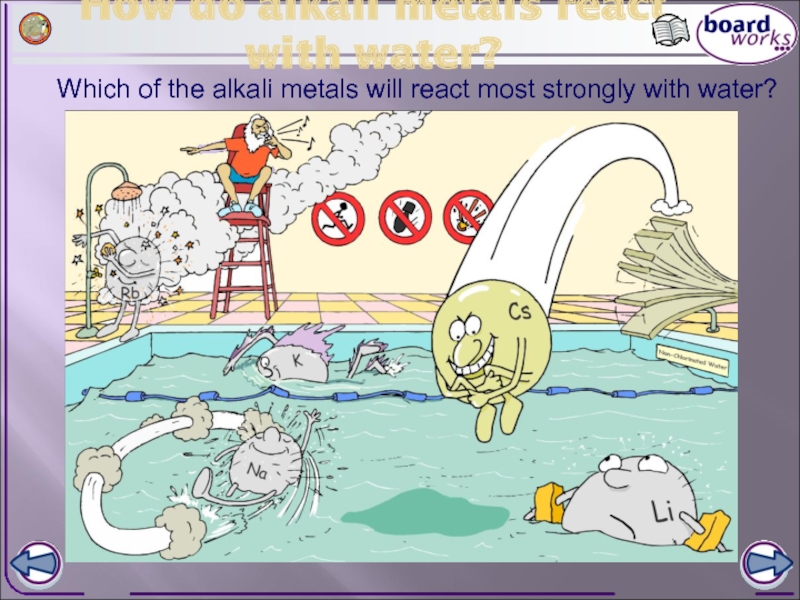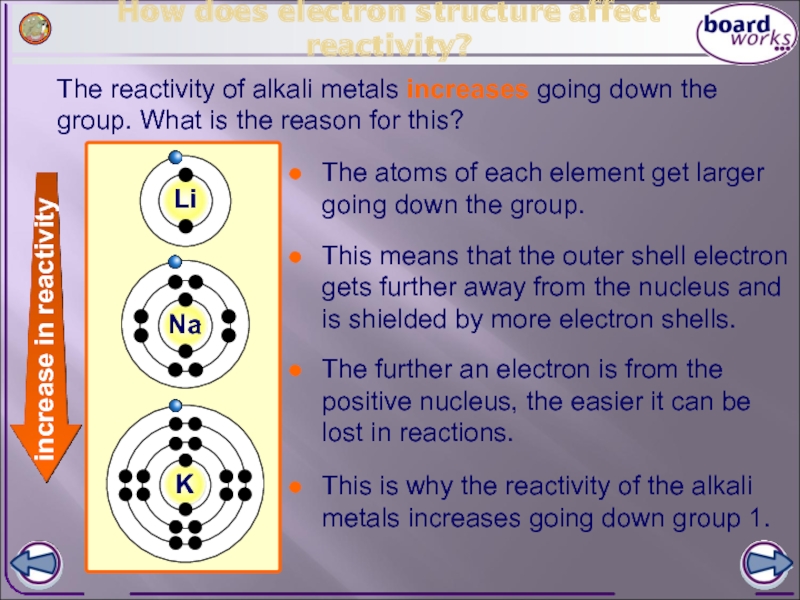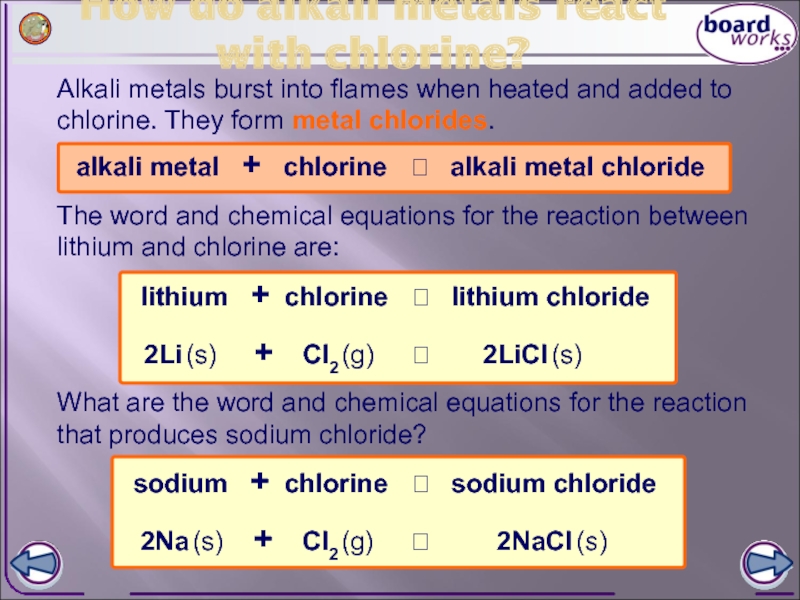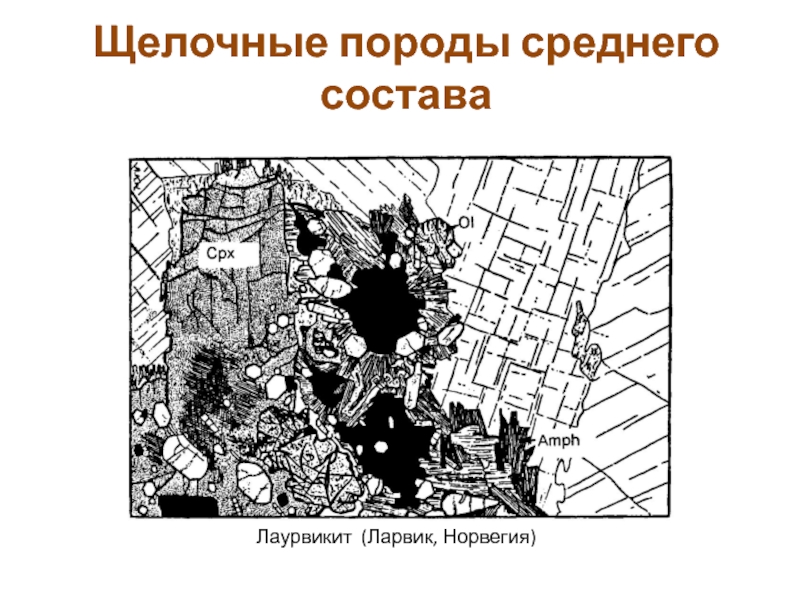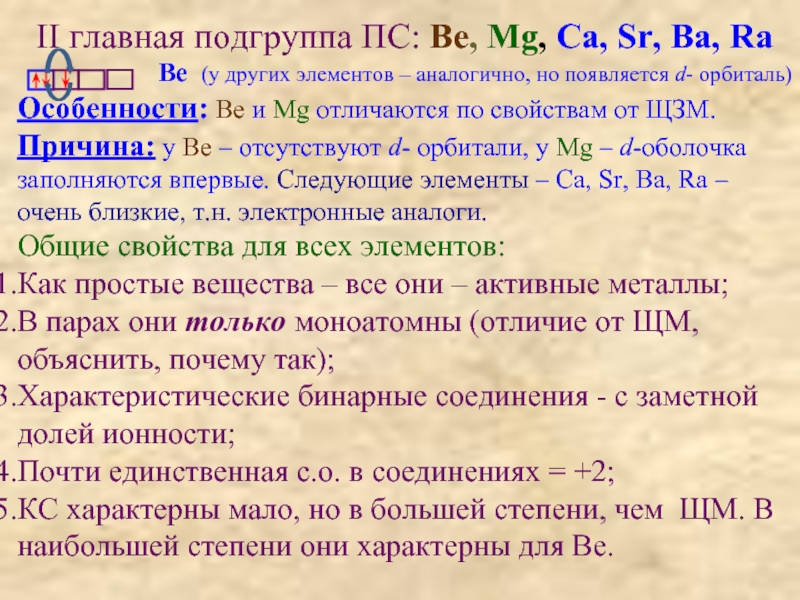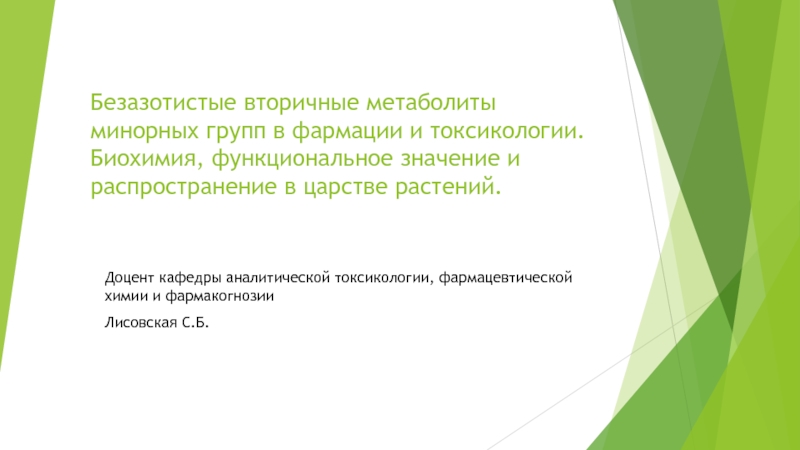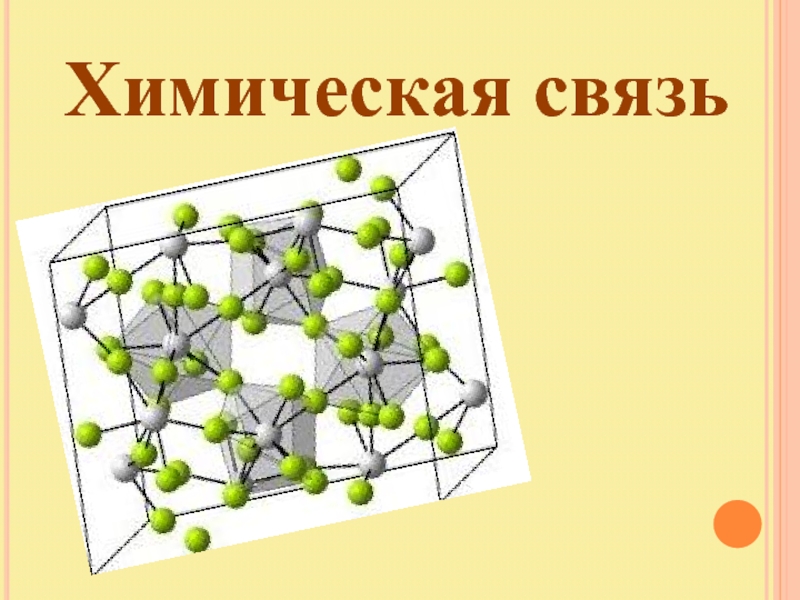- Главная
- Разное
- Дизайн
- Бизнес и предпринимательство
- Аналитика
- Образование
- Развлечения
- Красота и здоровье
- Финансы
- Государство
- Путешествия
- Спорт
- Недвижимость
- Армия
- Графика
- Культурология
- Еда и кулинария
- Лингвистика
- Английский язык
- Астрономия
- Алгебра
- Биология
- География
- Детские презентации
- Информатика
- История
- Литература
- Маркетинг
- Математика
- Медицина
- Менеджмент
- Музыка
- МХК
- Немецкий язык
- ОБЖ
- Обществознание
- Окружающий мир
- Педагогика
- Русский язык
- Технология
- Физика
- Философия
- Химия
- Шаблоны, картинки для презентаций
- Экология
- Экономика
- Юриспруденция
The alkali metals презентация
Содержание
- 1. The alkali metals
- 2. Where are the alkali metals? lithium sodium potassium rubidium caesium francium
- 3. Why are they called the ‘alkali metals’?
- 4. What is the electron structure of
- 5. What are the properties of the alkali
- 6. What is the trend in density? The
- 7. What is the trend in melting and
- 8. How do the alkali metals react with
- 9. What are the word and chemical
- 10. How do the alkali metals react with water?
- 11. All the alkali metals react vigorously with
- 12. This reaction creates alkaline hydroxide ions.
- 13. How does lithium react with water? Lithium
- 14. How does sodium react with water? When
- 15. How does potassium react with water? When
- 16. How do alkali metals react with water?
- 17. How does electron structure affect reactivity?
- 18. Alkali metals burst into flames when heated
Слайд 3Why are they called the ‘alkali metals’?
The alkali metals are so
The alkali metals are unlike most other metals, which are usually hard and dense.
Слайд 4
What is the electron structure of alkali metals?
The alkali metals all
lithium
2,1
sodium
2,8,1
potassium
2,8,8,1
They are found in group 1 of the periodic table.
They have similar physical and chemical properties.
This means that:
They can readily lose the outer shell electron to form positive ions with a +1 charge and a full outer shell.
Слайд 5What are the properties of the alkali metals?
The characteristic properties of
They are soft and can be cut by a knife. Softness increases going down the group.
They have a low density.
Lithium, sodium and potassium float on water.
They have low melting and boiling points.
Слайд 6What is the trend in density?
The alkali metals generally become more
lithium
potassium
sodium
rubidium
caesium
0.53
0.97
0.86
1.53
1.87
Слайд 7What is the trend in melting and boiling point?
The melting points
Element
Melting point (°C)
lithium
potassium
sodium
rubidium
caesium
181
98
64
39
28
Boiling point (°C)
1342
883
760
686
671
Слайд 8How do the alkali metals react with oxygen?
All alkali metals react
Слайд 9
What are the word and chemical equations for the reaction that
What is the equation for the reaction with oxygen?
The reaction between an alkali metal and oxygen is an example of an oxidation reaction:
alkali metal + oxygen alkali metal oxide
The word and chemical equations for the reaction between lithium and oxygen are:
Слайд 11All the alkali metals react vigorously with water.
What does the
It is an exothermic reaction as it releases a lot of heat.
The reaction with water becomes more vigorous as you go down the group.
Слайд 12This reaction creates alkaline hydroxide ions.
The general equation for the
What is the equation for the reaction with water?
This is why the group 1 elements are called the alkali metals.
Слайд 13How does lithium react with water?
Lithium is the least reactive of
When added to water, it fizzes and moves around slowly across the surface of the water.
What is the equation for this reaction?
Слайд 14How does sodium react with water?
When added to water, sodium fizzes
What is the equation for this reaction?
The hydrogen sometimes catches fire because of the heat from the reaction.
The sodium melts as it reacts, and it becomes spherical and shiny, like a ball bearing.
Слайд 15How does potassium react with water?
When added to water, the potassium
What is the equation for this reaction?
Like sodium, it melts with the heat of the reaction.
The reaction produces so much heat that the hydrogen given off catches alight.
What colour would the flame be?
Слайд 16How do alkali metals react with water?
Which of the alkali metals
Слайд 17
How does electron structure affect reactivity?
The reactivity of alkali metals increases
The atoms of each element get larger going down the group.
This means that the outer shell electron gets further away from the nucleus and is shielded by more electron shells.
The further an electron is from the positive nucleus, the easier it can be lost in reactions.
This is why the reactivity of the alkali metals increases going down group 1.
increase in reactivity
K
Li
Na
Слайд 18Alkali metals burst into flames when heated and added to chlorine.
How do alkali metals react with chlorine?
What are the word and chemical equations for the reaction that produces sodium chloride?
alkali metal + chlorine alkali metal chloride
The word and chemical equations for the reaction between lithium and chlorine are:
